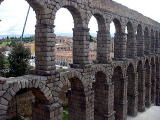Barcelona Metro
The Barcelona Metro, part of the public transportation system of Barcelona, Spain is an extensive network
of electrified railways that run underground in central Barcelona and on
the surface to the city's suburbs.
The network consists of ten lines managed by 2 different operators: Transports
Metropolitans de Barcelona
(TMB), which manages the major underground lines; and Ferrocarrils de la Generalitat de Catalunya
(FGC - Catalan Government Railways) manages three integrated commuter lines
running out into the
extended metropolitan area. TMB operates the lines L1 to L5, FCG L6-L8
and the tram operates T1-T4.
Reference: Wikipedia
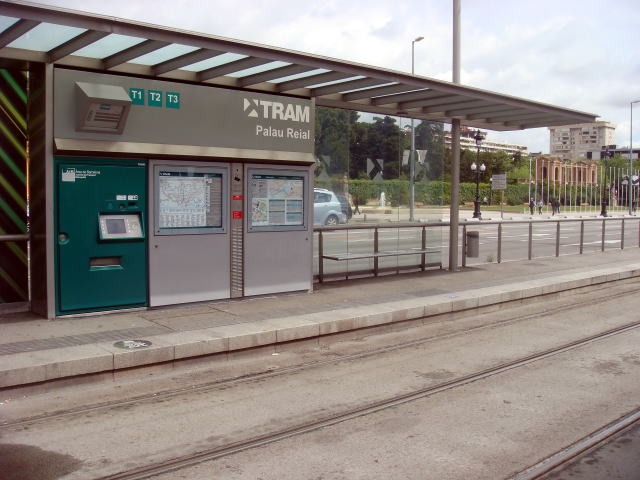 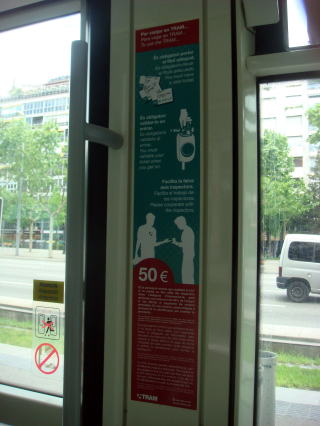
(L) A trambaix station in Barocelona Palau Reial de Pedralbes is nearby.
(R) A sign plate, warning the penalty of 50 Euros for a failure to produce
a valid ticket
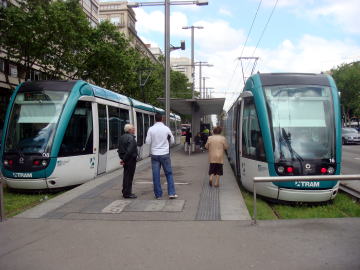 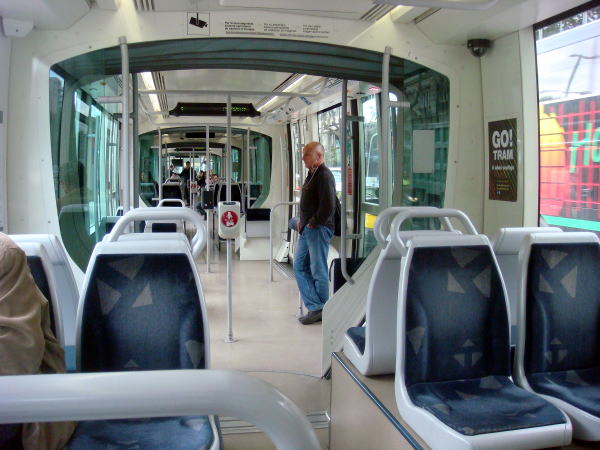
(L) The trambaix terminal of T1, T2 and T3 lines at Francesc Macia (R)
A nice, fresh interior of the tram car, Barcelona
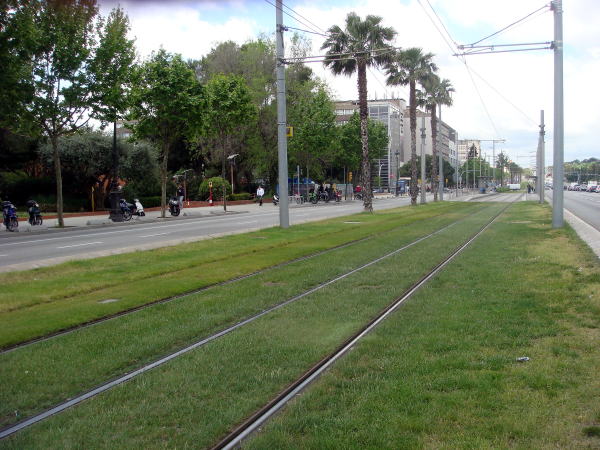 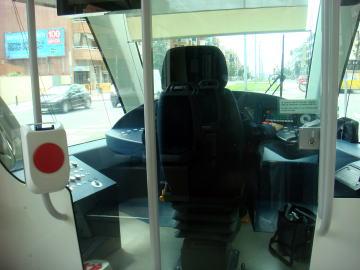
(L) Trambaix track paved with green lawn in Barocelona (R) A woman tram
driver at T2 line
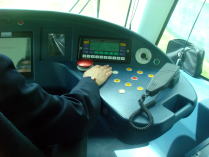 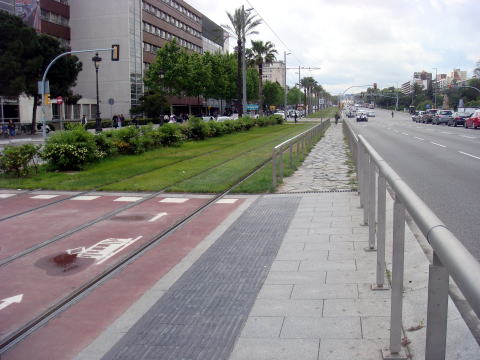 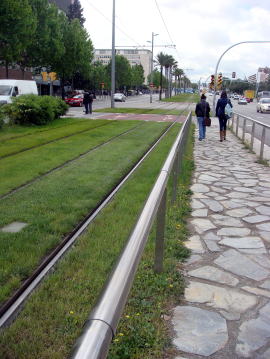
(L) A tram-driver's computer panel (M)(R) Grassed track on the tramway
in Barocelona ( Line T1, T2 T3 )
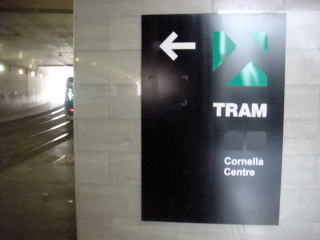 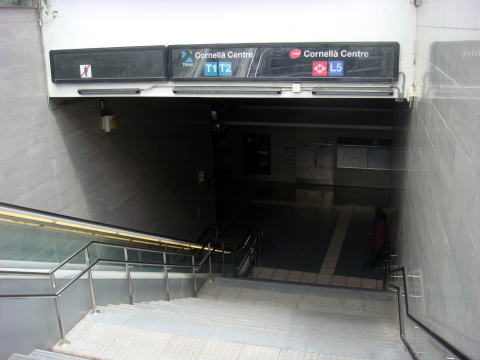
A guidance plate shows the place of a tram stop and subway plateform at
Cornella Centre station,
which is the network station of Renfe and Barcelona Metro.
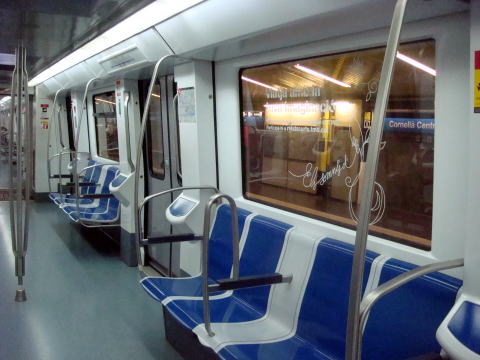 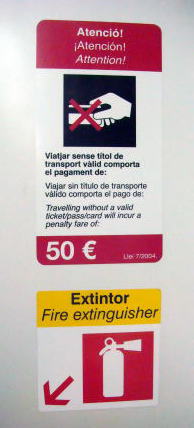 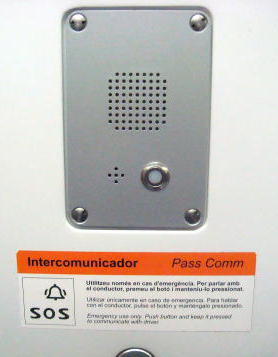
(L) The interior of the new Barocerona metro train (M) A warning sign plate
for a stealing a train ride (R) An emergency intercom in Metro train
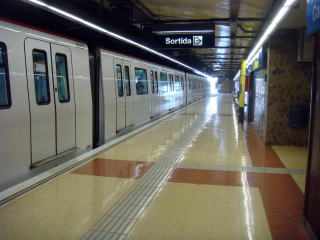 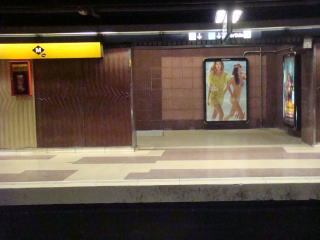 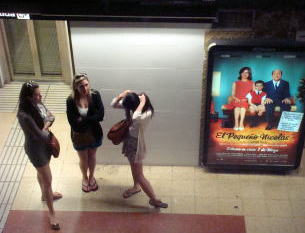
A plateform of Barocelona metro station
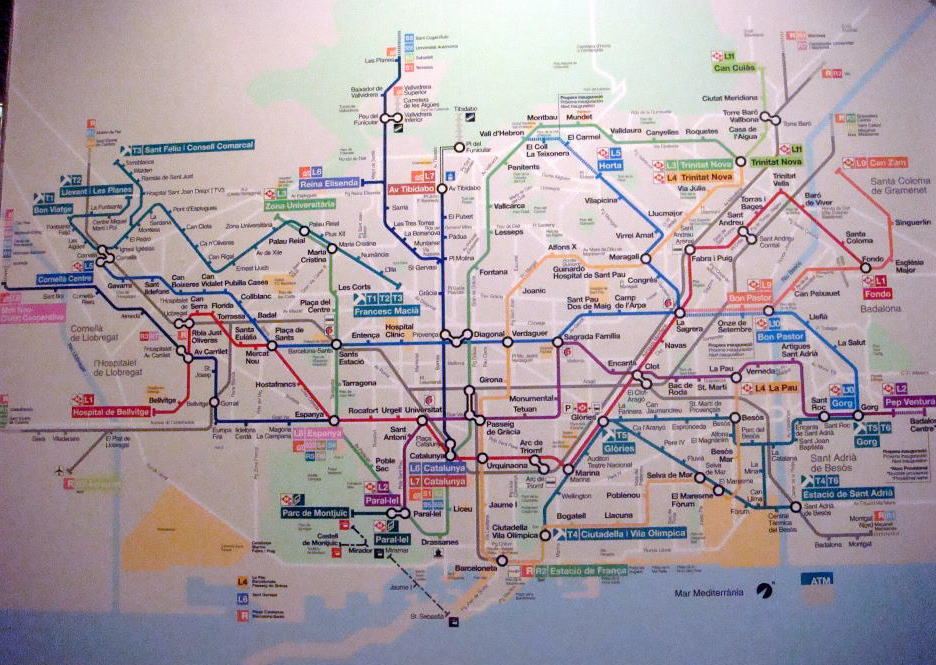
Barcelona metro route map
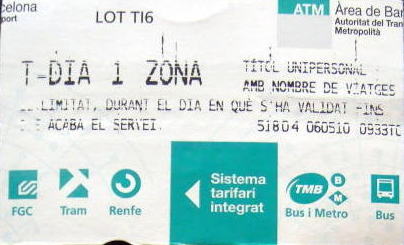 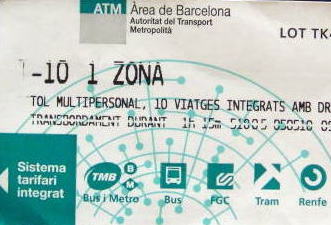 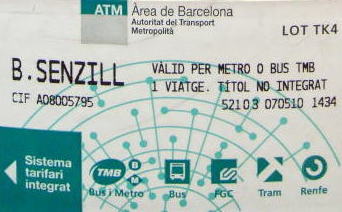
Barcelona Metro ticket: From left, it represents the one-day ticket, valid
for the whole day for Tram, Renfe, TMB bus and subways,
the T10 transport, good for 10 journeys and the single ticket for one journey.
 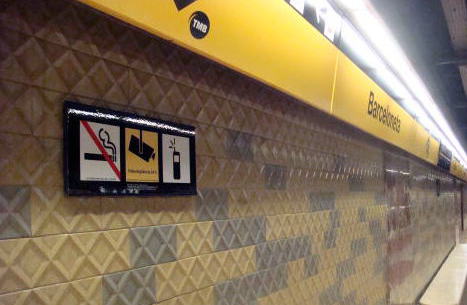
Barceloneta metro station is close to the area of Port Vell , a waterfront
harbour of Barcelona, which is facing to the Mediterranean Sea.
 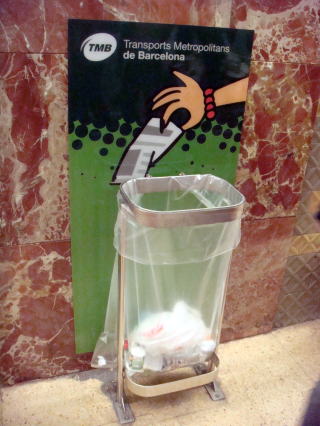 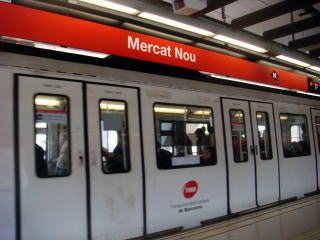
(L) SOS and information guide provided by TMB
(M) A trash disposable on a Metro plateform (R) A metro train at an open-air
station, Mercat Nou ( New Market )
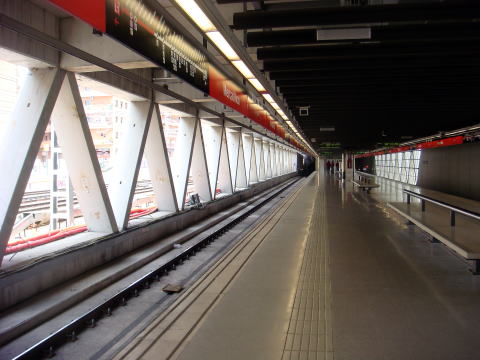 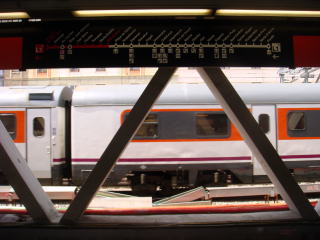 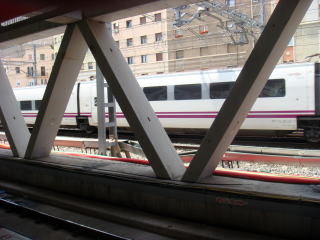
This photo shows an open-air station, Mercat Nou ( New Market ).
Many trains of Renfe's lines pass through on the surface and underneath
the metro station.
 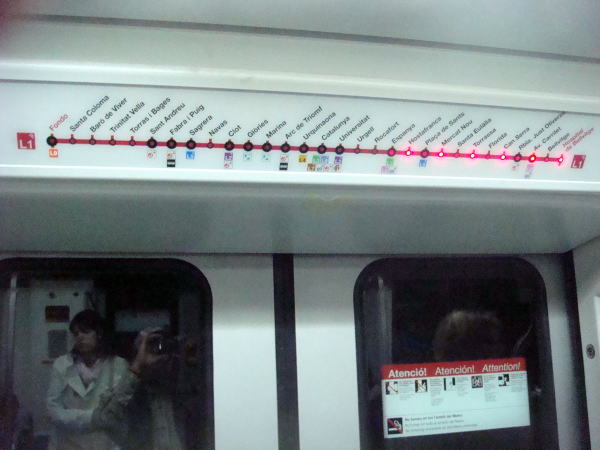
(L) A reserved seat for a senior citizen
(R) There is a route diagram and station guide above the metro-train door.
The red light shows the stations we have passed.
It might be more reasonable to put light on the next station to stop and
the direction which way this train is going to.
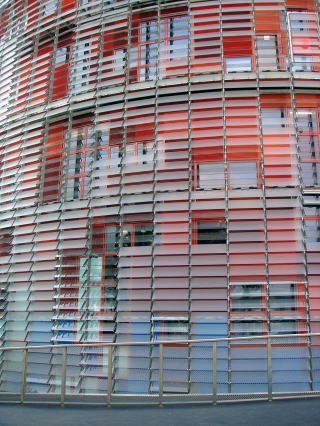 
Metro Glories, which is the easily accessible station to and locates underground
of Placa de les Glories Catalanes.
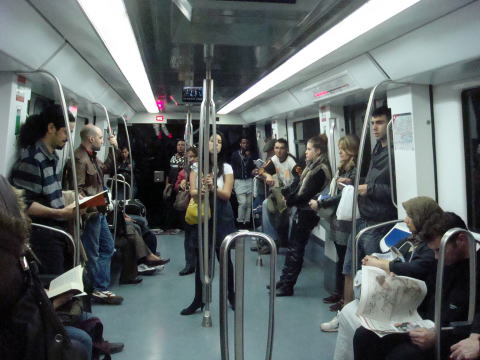 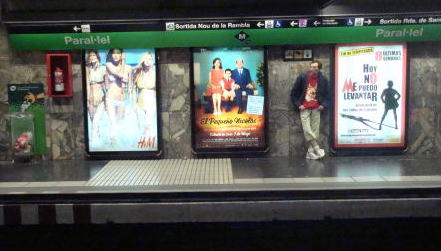
(L) Passengers of the metro train of Line L1 (R) A plateform of metro station,
Paral-lel
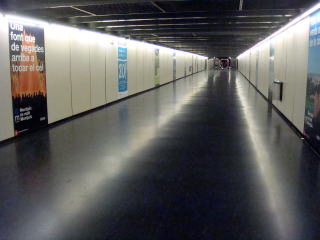 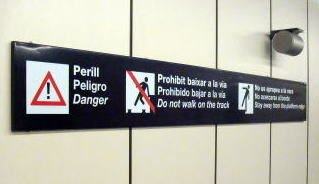 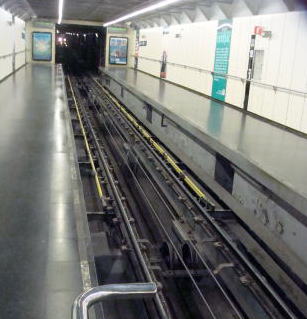
(L) A connection passage between the metro and cablecar Paral-lel stations
(M) Warning sign plate to stay away from the railway track (R) The plateform
with a sharp gradient
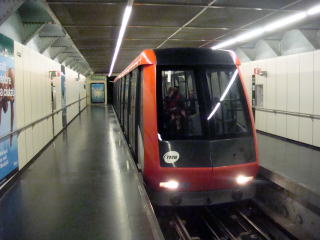 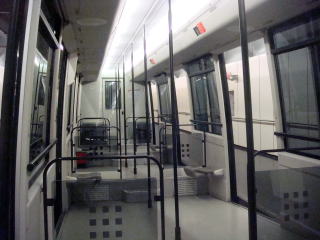 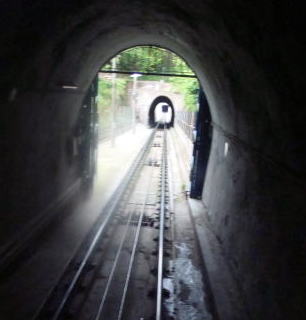
(L) A cable car at the Paral-lel station (M) Interior of the cable car
(R) A tunnel at the Montjuic cabal car
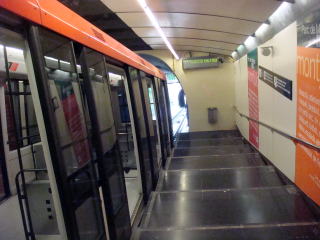 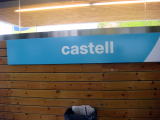 
A cable car arrived at the Castell de Montjuic station ( Funicular de Montjuic
)
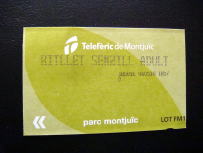 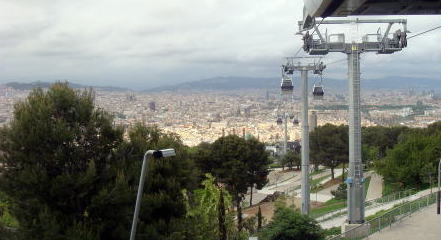 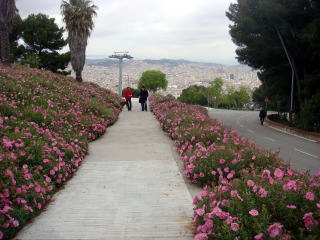
The photographs show a gondola lift to the top of the Montjuic in Barcelona.
(L) A ticket of the gondola (M) A panorama city view of Barcelona from
the gondola (R) A sidewalk nearby the gondola lift
Photographed in May, 2010.
Barcelona Airport and Commuter Train
The Terminal 2 of Barcelona Airport, which locates 10kms southwest of Barcelona,
has its own Renfe
commuter train station of the line 2( Nord ). It serves the section between
Macanet-Massanes and the
Aeroport, picking up many air passengers at Barcelona Sants station. A new railway stationin the
Barcelona airport is under construction. When completed, it would connect
the airport to the AVE
network, and Line 9 of the Barcelona Metro. However, the numbers of passengers
for Barcelona-Madrid
air shuttle had been reduced after 2007. This appears to be the side effect
of the high-speed train has
started to link via railroad the two major cities in Spain.
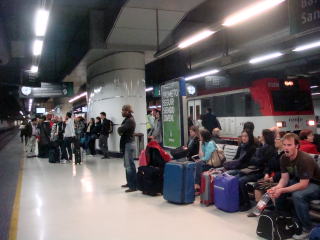 
Passengers are waiting for a commuter train ( Line 2, Nord ) to the Barcelona
airport. It stops at Barcelona Sants station.
If you are coming from Granollers Centre or Estacio de Franca, you have
to change a train at Barcelona Sants.
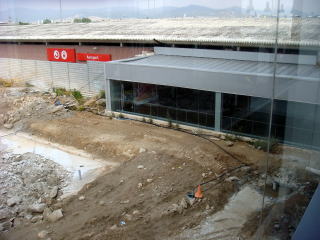 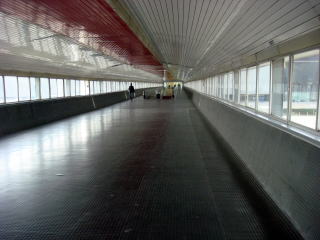 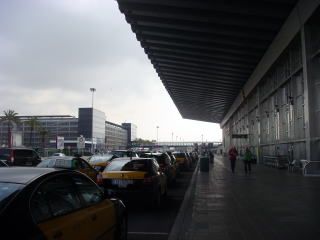
(L) The Renfe's airport station is still under construction. (M) A long
passage between the railway station and airport terminal
(R) The main entrance of Barcelona airport, Spain
 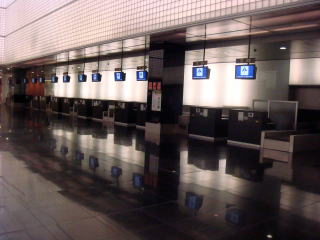 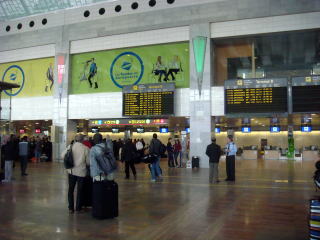
The 168 check-in counters and hall at the Barcelona international airport
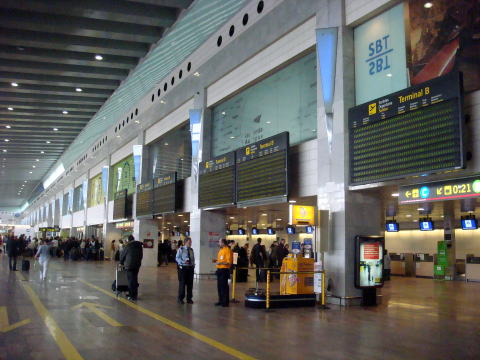 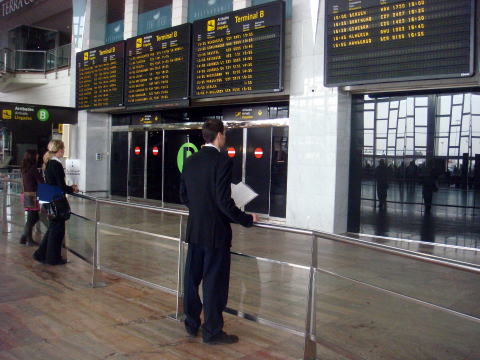
(L) The Terminal 1 of Barcelona airport (R) At the corner of Terminal 1,
a tourist agent was waiting for an arrival of their client.
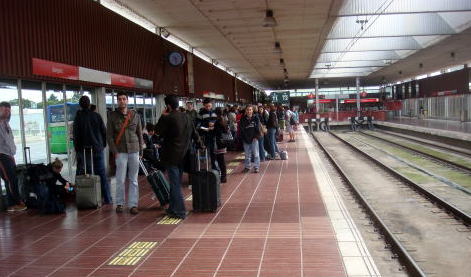 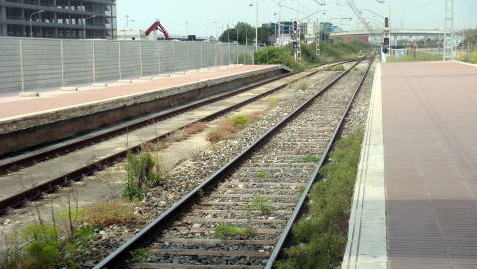
(L) Passengers waiting for a train to the downtown (R) The railway track
is single in the district near the airport.
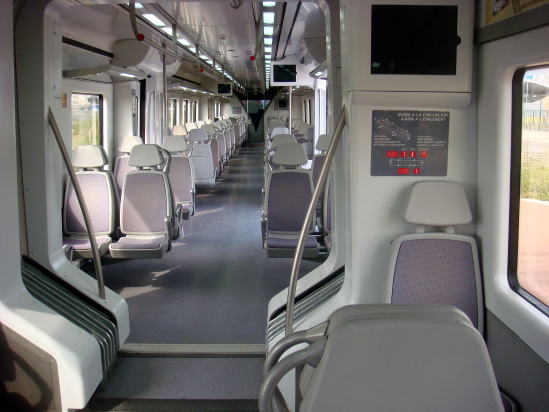 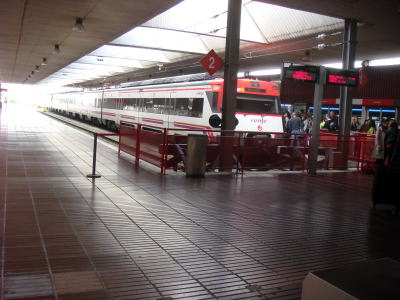
(L) A newly-built commuter train (R) A train arrived at the airport station
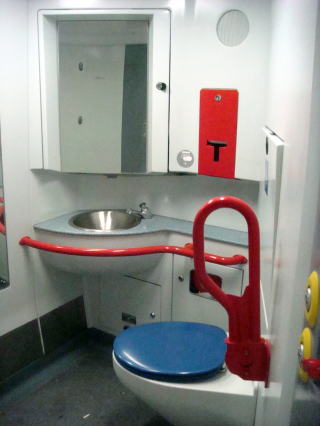 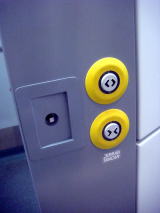 
(L)(M) This photo shows a commuter train toilet and electric switch button
for a handicapped passenger.
(R) An interior of a new train that runs between the downtown and the airport
of Barcelona..
Photographed in May, 2010.
バルセロナ地下鉄( Metro de Barcelona) はバルセロナの大量交通機関の一つであり、バルセロナ中心部と郊外とを
走る大規模な鉄道ネットワークである。 現在、路線網は9路線あり、異なる2社によって運営されている。
バルセロナ交通局 (TMB) が主要な地下路線を運営し、カタルーニャ公営鉄道 (FGC) が広域都市圏への通勤路線と
空港線とを運営している。
 Railway Travel around the World
Railway Travel around the World
All railway trains should be completely smoke -free.
 Smoking ban in the railway trains of the world Smoking ban in the railway trains of the world
鉄道全面禁煙化は世界の常識
 Introduction of Spain: The first Spain's law to restrict smoking enforced
in 2006. Introduction of Spain: The first Spain's law to restrict smoking enforced
in 2006.
 Spain enforced a total smoking ban in indoor public space in 2011. Spain enforced a total smoking ban in indoor public space in 2011.
Spain 2006-2011
 Madrid tour Madrid tour  Barcelona tour Barcelona tour  Gaudi's masterpiece Gaudi's masterpiece  Barcelona metro and railway Barcelona metro and railway  Segovia Segovia
 High-speed train in Spain High-speed train in Spain  Smoking ban in Spain in 2010 Smoking ban in Spain in 2010
 バロセロナ都市交通 バロセロナ都市交通
 2010年5月執筆 医学博士 宮本順伯 2010年5月執筆 医学博士 宮本順伯
★This Web site is link-free.
This information was provided by the Smokefree Hotel and Travel.
The photographs were taken and the article was written in May 2010,
by Junhaku Miyamoto, M.D., PhD.
Copyright (C) 2010 Junhaku Miyamoto, All rights reserved.
|
